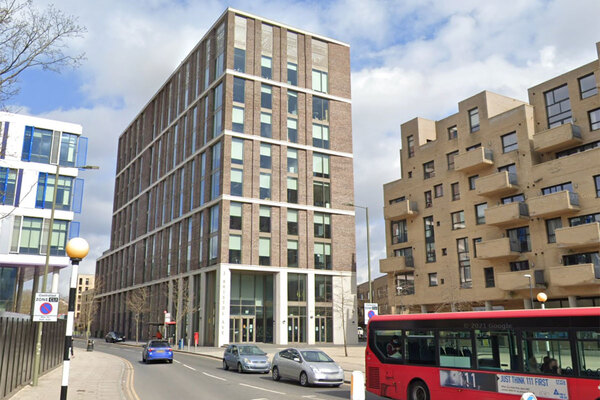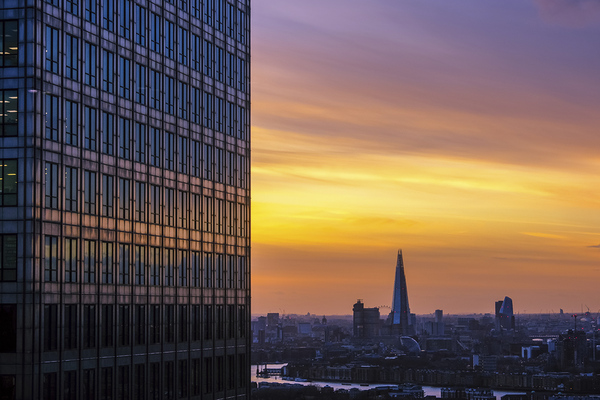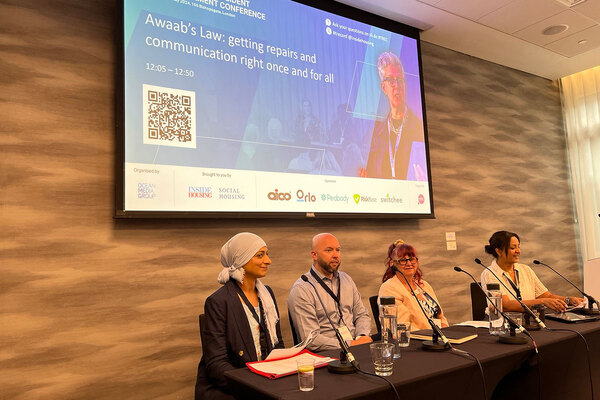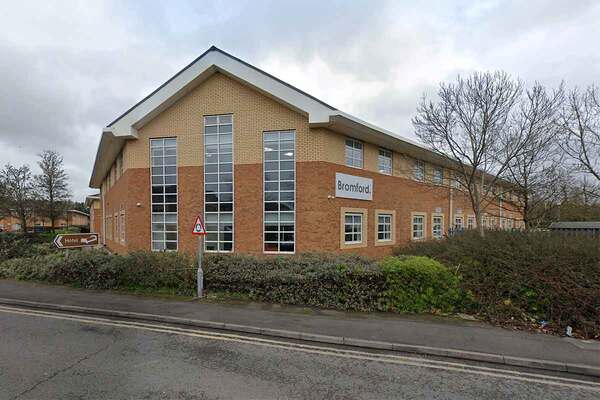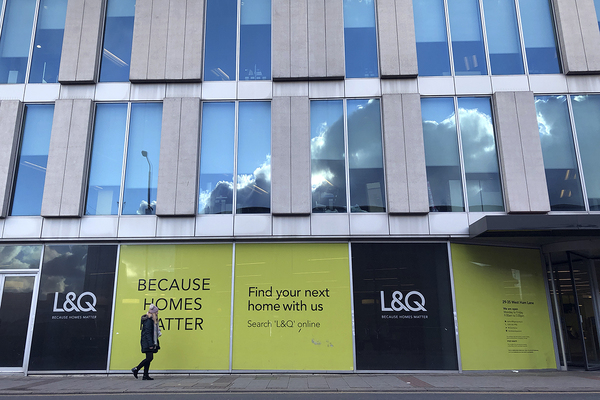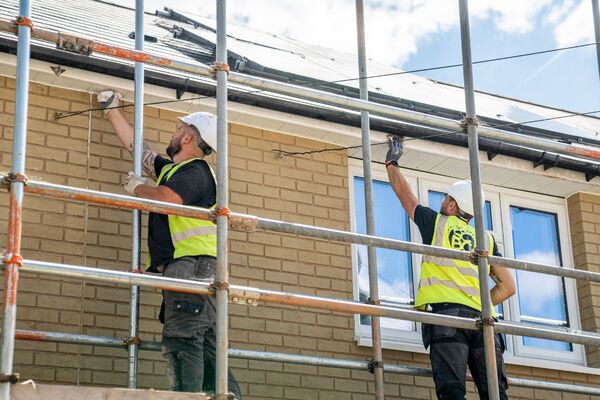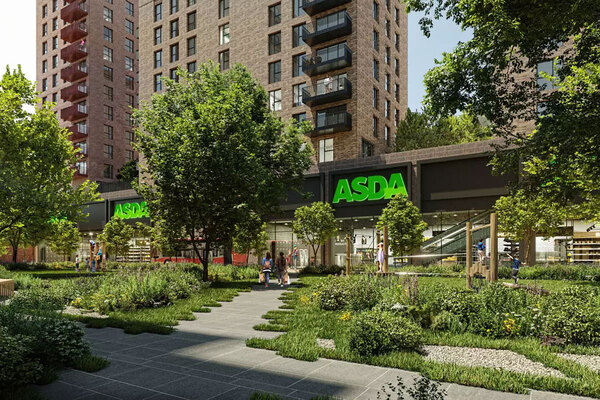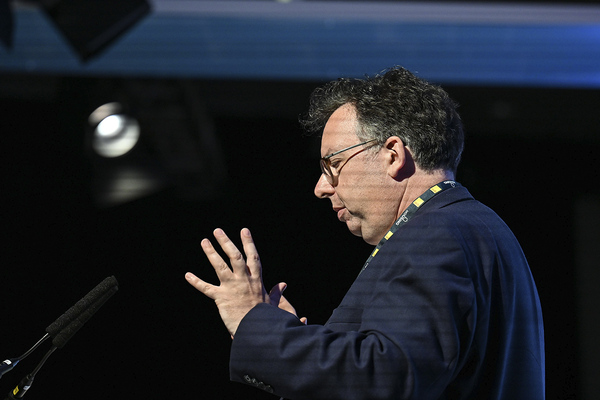You are viewing 1 of your 1 free articles
Cladding remediation: why is progress so slow?
It has been nearly seven years since the Grenfell fire, yet thousands of buildings are still in need of cladding remediation. Peter Apps investigates why the process has been moving at such a glacial pace
Towards the end of January, in an anonymous-looking block of flats down a backroad in north-west London, something happened which shouldn’t have.
At around 4.40pm, a fire started within the building, but spread out of a window and up the external wall. Half of the building’s wall, all of the roof and four balconies were damaged by the fire.
In theory, fires should not spread from flat to flat in UK buildings. But after the Grenfell Tower fire and seven years of revelations about the extent to which combustible materials have been installed on the walls of people’s homes, it should no longer be a surprise when this happens.
What makes this all the more worrying is that the issues at Petworth Court in Wembley were known.
Octavia Housing, the social landlord which owns the block, knew it had combustible materials on its walls. So did its original builder Vistry. But neither had managed to get themselves together to get the materials off the walls by the time of the fire on 29 January.
Nothing about this building was unusual. As it stands, of 3,839 buildings above 11 metres being monitored by the government due to the need for cladding remediation, 2,286 have not even started works yet.
This is also almost certainly an undercount of the total number of buildings which need to be fixed, and possibly quite a large one.
This is because it excludes buildings below the 11 metres and those above it which have not yet been fully assessed against new guidance. This is a lot of buildings. For example, Barratt Developments has identified 278 problem buildings, but only 128 have made it into the government figures because they are the only ones to have had full assessments.
Based on the government’s own estimates, the 3,839 figure could eventually rise by as much as 5,000.
So why, after seven years of effort, turmoil and debate, is progress so sluggish?
Buildings can broadly be placed in three different baskets: those where one of the 55 developers who have signed the government’s remediation contract has taken responsibility for fixing them (1,345 buildings); those owned by social landlords (1,952 buildings); and those owned privately where the original developer no longer exists or is not part of the government programme (the rest).
Various government funds have covered some of the remediation work (cladding removal and replacement) across some of these buildings, but ultimately, in the developer category, it is up to the developer. The social landlords should be fixing their buildings.
Where neither of these parties can be found, it is probably less surprising that progress is slow, but what is going wrong in the first two categories?
Work has started on only 35% of the blocks where developers are taking responsibility (and remember, this is an undercount), and only 37% of those owned by social landlords (729 blocks). This leaves a lot of buildings in a similar limbo to the block in Wembley.
Mark London, head of the construction law team at Devonshires, says a huge part of the reason for the delays are the disputes behind the scenes about what exactly needs to be done on each building.
For the buildings which developers have taken responsibility for, the government’s contract only requires them to remediate in line with a “life safety” risk assessment. But such an assessment will often be controversial, because while the developer will want to do the minimum necessary to achieve a “tolerable” risk to residents, the freeholder who owns the building may well want the failures remediated in full – which they might be entitled to under their original contract.
“There is a huge difference between accepting that there was something wrong with the building and agreeing what needs to be done in order to remediate it,” says Mr London.
The risks in an identified building are analysed using official guidance known as PAS 9980 – but different fire engineers can apply it differently. Often, the developer’s surveyor will say only a small amount of work needs doing, but the freeholders will say far more extensive fixes are required. This can lead to a lengthy dispute where no work happens.
Dispute
At Charlotte Meehan’s building in Bow, east London, a dispute between the freeholder and developer has put remediation work on hold. The building has high-pressure laminate cladding (essentially thin layers of wood glued together), combustible insulation and missing cavity barriers.
The building was constructed by Bellway in 2010, which has signed the remediation contract. Bellway has placed the block in its first wave of remediation works and was due to send surveyors to come to the property over the summer to do surveys ahead of this work. But this is where progress stopped.
“We got told that it would be the end of July, then the end of September, and then the end of November, and then we just haven’t had an update since,” she says.
E&M, which acts for the building’s freeholders, has not granted access for Bellway’s surveyors while their lawyers argue over the detail. “The freeholder claimed that they don’t want the building made half-safe, they want it made completely safe, which obviously I agree with in principle, but as it currently stands, we’re living in a building that is extremely unsafe,” she says.
These differing views of what needs to be done to make a building safe are complicated by insurance. Residents of blocks with dangerous cladding face staggering insurance bills, as insurers have left the market and those remaining have gouged customers with higher prices to reflect the lack of options and the higher risk.
“The reason why remedial works take longer than most people find desirable is because contractors are fighting over the scope and value of the work”
But a partial fix, made according to the developer’s limited specifications, may not be enough to bring these premiums down.
In statements to Inside Housing (see below), both Bellway and E&M say they had recently made progress in their conversations and an assessment of the building would be made soon.
Dom Ahern, meanwhile, is one of the residents at a large east London block. His developer is Vistry (formerly Countryside), the same as the building in Wembley.
Here, too, the developer is unable to agree the scope of works with the freeholder, Wallace Estates – a huge company linked to Italian aristocrats.
Mr Ahern explains that the proposal the developer has put forward will still leave some combustible materials on the walls.
They have also been told this may not be enough to satisfy their insurance provider, which means the premiums may stay high even after the work. Their premiums are currently £780,000 a year, split between the 258 flats, which is now more than what the total service charge for the building was originally.
Like Ms Meehan, he and his neighbours are stuck in indefinite limbo. “Everything’s been about to start for over a year,” says Mr Ahern.
“Your company signed a pledge last April to make good past failings,” said one resident of his building in an email sent in February last year. “We are 10 months on from that and yet we still have a complete lack of action and to use your term, radio silence. This is frankly shocking… Lives are being seriously impacted and put at risk by inaction. Enough is enough.”
The reply from Vistry promised works would start by July. But we are now in March of the next year, and the wait goes on. A spokesperson for Vistry says the works were “complex” but the tender and design exercise were now complete.
Certainly, there is growing resentment from leaseholders towards the developers. A survey carried out by the resident campaign group End Our Cladding Scandal (EOCS) last year rated Vistry as 1.3 out of 10 for communication. The firm added that communication is often overseen by a management company and at Meath Crescent, residents had received quarterly updates.
Developer or contractor?
What about the social housing sector? Here, the buildings are largely not covered by the ‘developer pledge’, because the firms acted as contractors for the social landlord, not as the primary developer of the building.
But legal disputes are still a major cause of delay.
Large London housing association L&Q has shared with Inside Housing a 19-step list for every building that requires remediation (see box, below). After establishing whether there are any defects, determining whether they require remediation and working out the scale of works required, the provider must move to determining liability, working out redress, negotiating, suing or settling. This can take an extraordinary amount of time.
Steps required in building remediation projects
- Establish if there are any defects (life safety fire risks and loss protection of assets)
- Determine which defects require remediation
- Confirm the resulting scale of works
- Determine liability of defects
- Design
- Product
- Construction quality
- Regulatory change
- Determine most suitable approach for redress against third parties involved in the above
- Negotiate
- Take legal action (where considered viable)
- Out-of-court settlement
- Consider all other avenues: eg pursue sub-contractor/claim on NHBC or contractor/sub-contractor’s insurance
- Look into available grant streams (Building Safety Fund: 18 metres-plus and Cladding Safety Scheme: 11 metres to 18 metres)
- Open negotiations or
- Proceed down the legal route
- Reach a settlement agreement with any third party
- May include an approach where we agree and approach, while gathering evidence during the remediation to raise legal action against third parties once work is completed
- Agree who will appoint ‘designer’ of the remediated system (D&B or client-appointed designer)
- Manage/oversee remediation project (where original party is carrying out the works)
- Spec, tender, instruct, oversee remediation where L&Q are self-delivering
- Position planning and building control
- Finance all of the above (alongside other non-building safety plans)
- Conclude remediation
- Arrange fire risk assessment covering the external wall and EWS1 forms
- While
- Proactively engaging with residents and non-resident leaseholders
- Supporting them through the inspection and remediation process,
- Being mindful of the anxiety, disruption, impact and effect on residents well-being
- Providing assurance and clarity for leaseholders on their financial protections under legislation
- Introducing additional building safety measures required by the Building Safety Act and secondary legislation
Fiona Fletcher-Smith, chief executive of the 105,000-home social landlord and chair of the G15 group of London’s largest associations, explains: “We are the long-term holders of the property. We own the block forever, so we’ve got to get it right. But there are contractors out there who will fight over everything.”
Both sides often instruct separate fire risk assessors to carry out PAS 9980 assessments, which can result in very different assessments of what needs to be done. So a dispute ensues about the scope of work and months tick by.
“Fundamentally the reason why the remedial works take longer than most people find desirable is because contractors are fighting over the scope and value of the remedial work required,” says Mr London. “With some notable exceptions, the majority are coming to the table with their insurers behind them, who do not easily accept a liability to indemnify, along with a group of experts who may well hold a contrary view to those instructed by the building owner.”
At one L&Q block, where residents were fully decanted years ago due to the scale of the risk, negotiations with the builder have been running for six years with no end date in sight. The building sits empty.
In some cases, social landlords may simply go ahead and remediate, and fight the legal battle later. But this can be very difficult to do.
“Charity law and fiduciary duties mean you have to pursue legal action if available,” says Ms Fletcher-Smith. “So if there is a possibility of making a claim, we have to explore that.”

Doing the work before the negotiations on this claim have opened creates a chance of the contractor claiming that they could have done the works more cheaply, or arguing that the damage was caused by the client’s repair.
Even where government grant is being used, the terms of it mean legal claims still have to be pursued where available and the grant will never cover the entirety of works. This is particularly true in social housing, where it only covers the portion that would otherwise have been billed to leaseholders.
This is not to say housing associations are free from blame, however. EOCS published a report in February 2022 titled ’Dereliction of Duty’, which went into detail about difficulties residents of some buildings owned by social landlords have experienced. In it, 90% of residents rated communication and customer service negatively, with more than half picking the lowest grading of “very poor”, and 90% also saying the crisis had damaged their mental health.
However, one senior source at a large social landlord – which is now on site at almost all of the blocks where remediation work is required – questions why others are taking so long.
“Definitely this takes time. But it has also been some time, so I’m not sure that can explain why some are so far behind,” the source says.
The source adds that some organisations may have delayed carrying out surveys until it was clear where government guidance was going to land (the final version of PAS 9980 was only published in January 2022).
“At one stage, it looked like every building was going to need massive remediation, and I think some people just paused assessments until things got a bit clearer,” the source says. “But that means they have a real backlog of assessments to do just to get started on the work.”
Lack of professionals
It is also fair to say that remediation is rarely a straightforward process, and well-publicised issues in the construction sector (shortages of materials and planning delays, for example) have not helped.
Ms Fletcher-Smith says a lack of professionals can slow the pace at which it can work: “Each of those 19 steps requires a slew of different professionals. Fire engineers who are suitably qualified to carry out the building assessments are in particularly high demand, and there just aren’t enough of them. You also have to be careful about just trusting one party, which means we may need second or even third opinions on some buildings. There are shortages of professionals in every area, and issues with materials. Last year, for example, the country ran out of scaffolding at one point.”
Even where funding is found, or liability and a scope of works is finally agreed, cladding remediation works can be long, complex projects which take time to design and execute.
“There is a view that these things are quite straightforward and simple, but they’re not. They’re very complex engineering projects,” says Mr London.
“In many, many cases, when we start to open up an external system, it gives rise to often greater and more significant problems, wider problems with the structure, or problems in the way in which the external wall system was attached to the building,” he continues.
“Once you’ve got the panels off, you discover all sorts of issues you’ve got to put right,” says Ms Fletcher-Smith. “You need to take that opportunity to fix them while the scaffolding is up and the building is open.”
She says the G15 group of large London housing associations expects work to continue to 2036 to get all of their buildings fixed – with the highest risk being worked on first.
“I’m really conscious that the poor residents are stuck in the middle of that. We put a lot of effort into interim measures to make sure the building is safe in the meantime, because it is a really long time to be
stressed and anxious about fire,” she says.
One of the things leaseholders want to see is more proactive monitoring of the speed and performance of those who have agreed to do the remediation work.
“It’s been a year since the developers signed the government’s remediation contract, but the vast majority of innocent leaseholders remain trapped and still don’t know if or when homes will be made safe,” says Giles Grover, a spokesperson for the EOCS campaign.
“We warned the government about these issues before the contracts were signed, but now the ongoing blame game and buck-passing goes on – now between freeholders and developers, with residents stuck in the middle. There needs to be visible oversight of the process and accountability for those going too slowly.”
This is an important ask. Even leaving the turmoil faced by residents of these buildings to one side, as events in Wembley show, the next fire will not wait for the industry to finish its arguments.
Responses
A spokesperson for the freeholder of the Mojo building said: “As freeholder, our primary concern is always the safety and well-being of our residents, and it is our objective to ensure that remediation is carried out as quickly and safely as possible.
“As such, in February 2023, we provided a licence to Bellway which would have allowed them to carry out their intrusive surveys to commence the first phase of the remediation process. Since then, Bellway has been negotiating revised terms with us.
“As of Wednesday 6 March 2024, we had understood from them that terms had been agreed regarding access, which would have enabled them to carry out the intrusive investigations. Late last week, we were informed that Bellway still had some outstanding points.
“We are now therefore seeking to meet with Bellway with a view to progressing matters expediently. We are hopeful that these matters can be agreed in the next few days. In the meantime, we are making arrangements so Bellway can progress with the PAS 9980 survey as quickly as possible.”
A spokesperson for Bellway added: “As a responsible developer, we are committed to carrying out and completing remediation works as soon as reasonably practicable and in line with our obligations under the [developer contracts].
“We have made considerable investments to deliver these commitments and expect the pace of remediation to increase. However, as is the case for other builders, the programme remains dependent on a number of factors, some of which are beyond our control – for example, access licences, complex planning applications and the availability of specialist contractors.”
A spokesperson for Vistry said: “The remediation works at [Mr Ahern's building] are complex due to the involvement of three parties. However, we have worked with all responsible entities and have been actively seeking a resolution to allow works to commence. This includes a design and tender exercise, which is now complete.”
A Wallace Estates spokesperson said: “We have repeatedly called for meaningful reform to ensure buildings are fixed quickly and paid for by those that caused these issues. With regard to [Mr Ahern's building] we are working with the RTM company and Vistry as a priority to progress these works. That includes ongoing discussions with Vistry to ensure we are satisfied they are prepared to carry out the breadth of work required to make the building safe once again.”
A DLUHC spokesperson said: “We are investing billions of pounds to make sure that buildings with unsafe cladding in England are made safe, as well as ensuring that developers and registered providers of social housing fix their buildings.
“The total number of buildings reported to have started or completed remediation works has more than doubled since February 2023. While this is progress, we know more needs to be done – and faster.”
Recent longform articles by Peter Apps
What it is like to live in Nine Elms as an affordable housing resident
While the wealthy private owners of flats in Nine Elms enjoy the use of the swimming pool and orangery, affordable housing tenants are struggling to get repairs done. Peter Apps reports
The water will come: how should the social housing sector prepare for a wetter world?
Peter Apps looks at how social landlords should prepare themselves to respond to flood emergencies, which are set to become more frequent as the climate changes
The office-to-residential conversions which have become slum housing
Poorly converted office blocks are putting people in temporary accommodation at risk of serious harm. Peter Apps reports
Sign up for our fire safety newsletter
Already have an account? Click here to manage your newsletters

